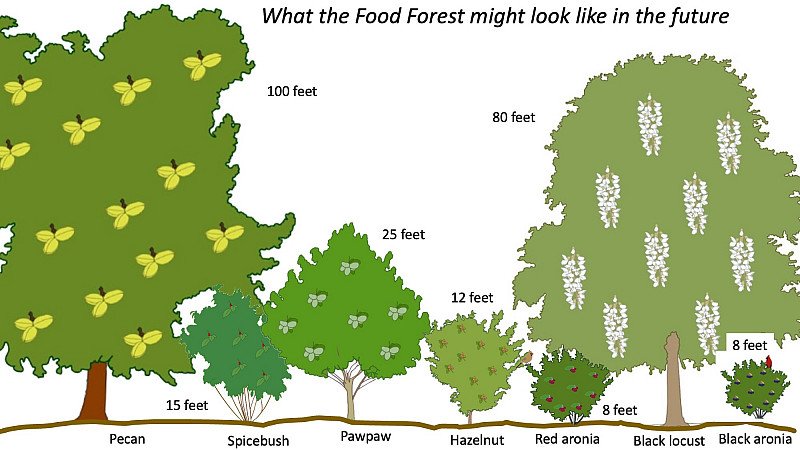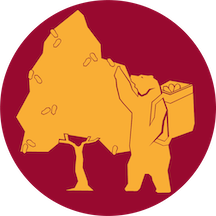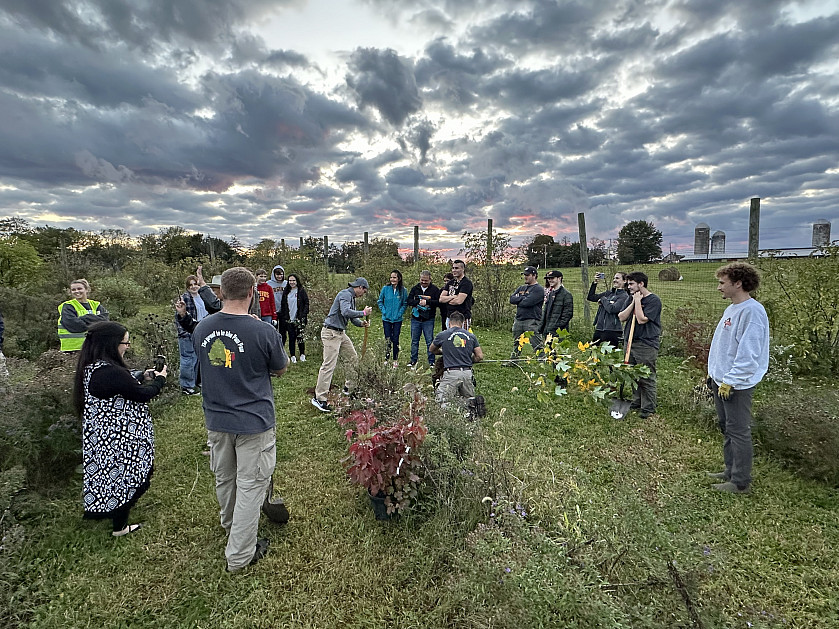
Ursinus Food Forest
“When humans collect and eat native foods, they become part of the localized food web, full participants in the places where they live.”
M. Kat Anderson, Tending the Wild (2006, pg. 290)
Planting for the Next 150 Years
Begun in 2019, the year of Ursinus’ sesquicentennial, phase I of the Ursinus Food Forest began a commitment to stewarding the landscape for the next 150 years and beyond in new and fundamentally different ways. The Food Forest is a student-created and student-led living-learning laboratory for just sustainable land management. Beside supporting experiential learning and research, the site produces a variety of foods, supports native wildlife (biodiversity), sequesters and stores carbon, and improves water quality within the watershed. The Ursinus Food Forest represents a living commitment to the Lenape People and supporting their reconnection to Lënapehòkink and the many species that call our local ecosystems home.
The Ursinus Food Forest is funded by the Pennsylvania Association of Conservation Districts, Private Donations, and College and Departmental Operations. We thank at Jessica Buck and Brian Vadino at the Montgomery County Conservation District, Donald Whittaker, Allie Cook and Heath Hidlay, the Fowler Family, and Kristen Cooney for their support. We are also thankful to the Delaware Tribe of Indians for their continued engagement with this effort.
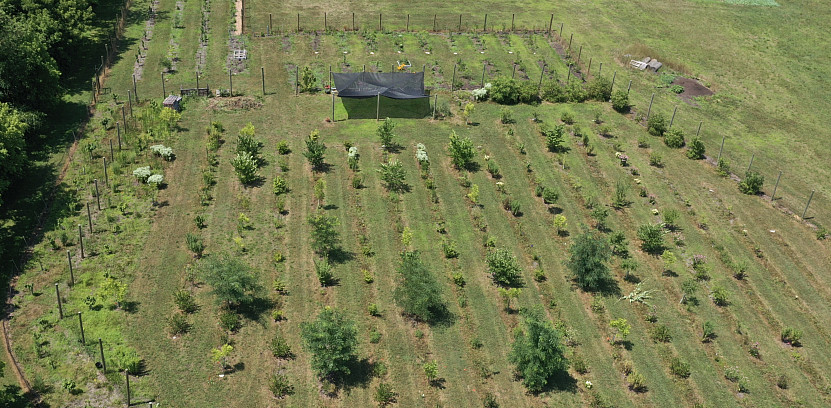
A “New” Form of Sustainable Land Management
The Food Forest implements a “new” form of sustainable land management, drawing on lessons from urban agriculture, urban forestry, and agroforestry (see Clark & Nichols 2013); the scientific concepts of multifunctionality and reconciliation ecology; and concepts from circular economies. Working at and with the many species at the site, students are building reciprocal relationships with the region’s many food-producing, native trees and shrubs as well as myriad other ecologically beneficial native and nonnative plant species. Yet scholarship is making it increasingly clear that the approaches embedded in these concepts were long critical aspects of indigenous forms of land management in North America (and beyond).
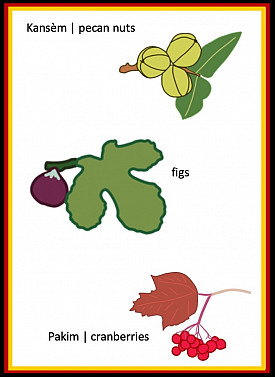
Phase I welcomed pecans, pawpaws, and American hazel, among more than a dozen others. These species are at the center of creating a vibrant and multilayered forest full of nuts, fruits, berries, and more. Phase II plantings introduced butternut, sumac, basswood, fig, and. pear to the site (see our species profiles). In the interim, more than a dozen species of native perennial—totaling thousands of plants—have been added to both phases. These plants support native butterflies, other insects, and numerous bird species.
Committing to a Just Social-Ecological Sustainability
Food forestry was a land stewardship practiced by indigenous peoples in Pennsylvania, including the Lenape. Since the completion of phase II, ongoing plantings—both of additional trees and shrubs as well as the critical introduction of numerous herbaceous species—have set the stage for a new commitment to social-ecological sustainability. As part of the Welcome Home Project, the food forest offers a new space for intercultural engagement between Ursinus students and the Delaware Tribe of Indians (or Lenape people). We are excited to work collaboratively with the Delaware Tribe to steward this land and its species.
- A December 2021 visit by then Assistant Chief Jeremy Johnson to the site offered students the opportunity to introduce the site to a Lenape representative for the first time, and allowed them to begin learning the meaning of some species on the site for the original human inhabitants of the region.
- In October 2023, a new cohort of capstone students (see below) welcomed representatives of the Tribe to the site as part of a collaborative effort to plant mùxulhemënshi trees (tulip poplar/Liriodendron tulipifera) to support the continuation of canoe-making traditions within the Tribe (see banner picture above).
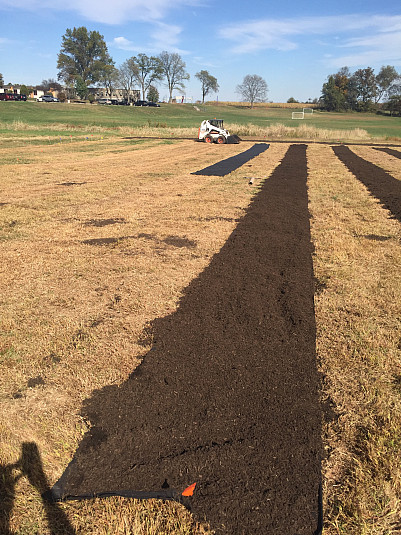
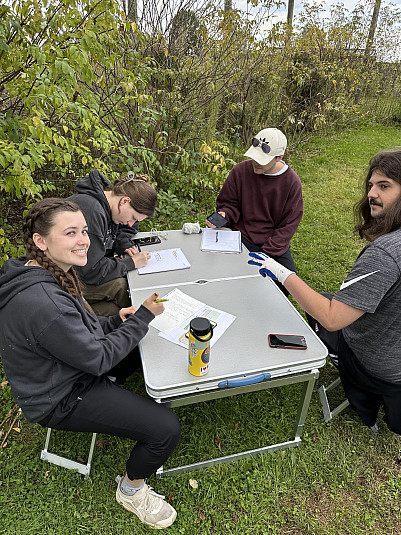
The Food Forest and the Environmental Studies Curriculum
The food forest is integrated into the ENV curriculum as a main project feature of several courses, but programmatic development and stewardship planning is tied to the ENV 454W Sustainability in the Suburbs capstone course. Successive iterations of the class designed the site, planted and developed its stewardship approaches, developed and implemented community engagement efforts.
- Phase I was planned and designed by a Fall 2017 capstone class.
- In Fall 2019, a second iteration of the class led the planting, all while working to develop a community engagement plan to guide future work at the site.
- A third iteration of the class in Fall 2021 undertook planting of phase II, with student teams also working to develop formalized management activities across the site, including monitoring and habitat enhancement, and developing harvesting protocols for the site’s first producing species (i.e. elderberry, aronia).
- In Fall 2023, students developed mapping, signage, and tour materials to support visits to the site by community members, including by elementary school students who are studying the connections of the Lenape people to native plants found on site.
As suggested by the parternship with the Delaware Tribe, the system is also an important field site for learning about the historical and contemporary aspects of ethnobotanical relationships to native species, social and economic dimensions of so-called nontimber forest products, and the practical aspects of forest stewardship. Students are introduced to and explore these topics in ENV 338 Forests & People, while supporting introductory stewardship activities for students enrolled in ENV 100 Introduction to Environmental Studies.
Beyond formal classes, the food forest provides practicum experience for students in the area of tree and land stewardship (see left), environmentally-oriented outreach activities, and also monitoring or data collection. Moreover, the food forest provides a model system for students in the Food Studies minor or Peace Corps Prep Program who are interested in developing technical knowledge and/or further developing their leadership experience.
